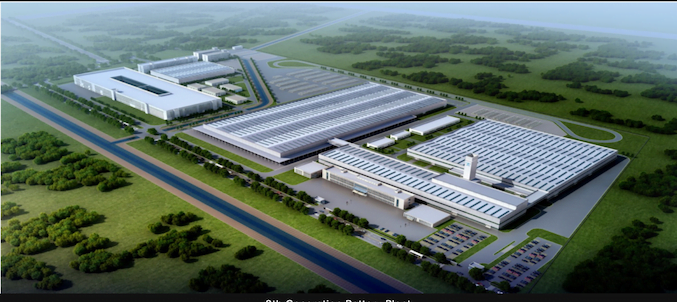
Planned lithium-ion battery gigafactory capacity in the US has grown twice as fast as in Europe since the Inflation Reduction Act was passed, Benchmark Minerals Intelligence told Energy-Storage.news.
As Energy-Storage.news reported at the start of the year, Europe’s push to onshore lithium-ion battery production was much further ahead of the US’. Both regions are seeking to reduce reliance on China, which dominates the space today.
But since then, a double-whammy of high power prices in Europe and the Inflation Reduction Act’s (IRA) tax credits for EV battery purchases with US-manufactured batteries, domestic battery module and pack production and standalone battery energy storage system deployments have changed the picture.
Evan Hartley, analyst for Benchmark Mineral Intelligence working on its Gigafactory data, said that since the Act was passed, there has been a 35% increase in announced capacity in the US compared to a year ago, versus a 17% increase in Europe. That doesn’t mean it’s caught up yet, however.
“Looking at 2022 as a whole the two markets are roughly on par in terms of growth and Europe is still around 200GWh ahead in terms of expected 2031 capacity,” Hartley said.
Benchmark currently pegs Europe’s 2031 planned annual production capacity at 1,186.2GWh versus 992.6GWh/957.6GWh for North America/US. Europe’s growth rate has been steady over 2022 while the US’ has shot upwards since the Act was passed having seen minimal growth in the first half of the year.
Numerous EV-focused projects have been expanded or accelerated while Turkish firm Kontrolmatik has increased its planned US gigafactory size and Norway-based FREYR is accelerating its plans, both of whom are energy storage market-focused.
That is in contrast to reports of delays to projects in Europe, including amongst some of the bigger names, but it’s too early to speculate that the US is actually taking capacity away from Europe, Hartley added.
“We’re not immediately seeing producers shifting plans from Europe to the US. The producers announcing new capacity in the US primarily had significant existing plans there, they’re just increasing them in light of the IRA.”
“One thing to note is the IRA disfavours Chinese companies, and most of the companies we’ve seen announce new capacity in Europe since it passed are Chinese. Many of the producers taking advantage of the IRA with new US-based plans are South Korean and Japanese.”
The extent of state support contained within the IRA has reportedly irked European policymakers. Numerous media reports this week have quoted the chair of EU parliament’s trade committee Bernd Lange as saying it should file a complaint with the World Trade Organization (WTO) on the basis that the IRA is incompatible with its rules.
Lithium-ion battery packs from the US and Europe are currently 24% and 33% more expensive than in China, where the average price sits at US$127/kWh according to BloombergNEF’s annual battery price survey, covered in a separate piece by Energy-Storage.news today.
Energy-Storage.news’ publisher Solar Media will host the eighth annual Energy Storage Summit EU in London, 22-23 February 2023. This year it is moving to a larger venue, bringing together Europe’s leading investors, policymakers, developers, utilities, energy buyers and service providers all in one place. Visit the official site for more info.
A month later, Solar Media will put on the 5th Energy Storage Summit USA, 28-29 March 2023 in Austin, Texas. Featuring a packed programme of panels, presentations and fireside chats from industry leaders focusing on accelerating the market for energy storage across the country. For more information, go to the website.


